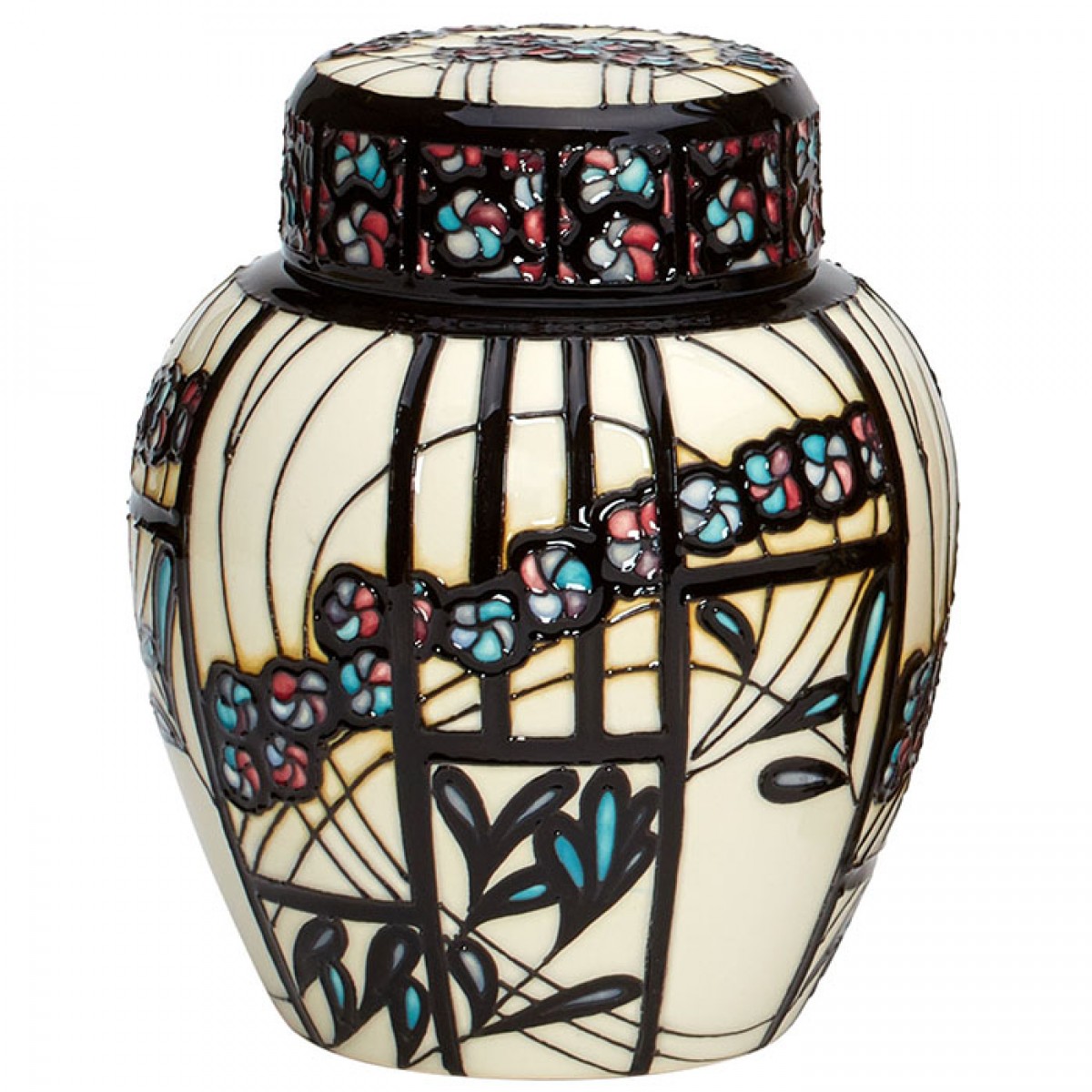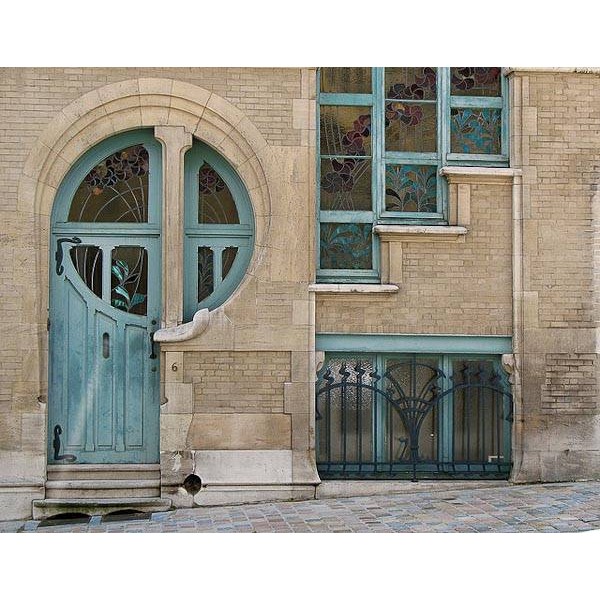Architect, Ernest Delune, designed the Art Nouveau “Glassmaker’s House” in Rue du Lac 6, Ixelles, Belgium (built in two phases between 1883-1904) for Clas Gruner Sterner, a Viennese craftsman celebrated for his stained glass windows. Unsurprisingly, Sterner himself worked on the beautiful stained glass on the door, whose patterns are in synergy with the circle that encompasses it, and the façade itself. Working in a studio at the top of the house, Sterner designed beautiful Art Nouveau windows for several of Delune’s houses in this affluent Brussels neighbourhood and the collaboration took Art Nouveau design to quite another level.

Art Nouveau celebrated flowers as a way to reject industrialism, and circular movements incorporated a fluidity that did not stand at ease within the manufacturing process. This Moorcroft ginger, complete with circular lid, mimicks the door of The Glassmakers House.
Collaboration is something in which Moorcroft excels. Tubeliners, follow the blueprint created by the designer in liquid clay slip before another infills with metallic oxides. Designer, Nicola Slaney, studied the iconic Art Nouveau frontage of Rue du Lac 6, not only the curious door, but also the monumental staircase running along a very large stained glass window, occupying a vast section of the facade, composed on the floral theme of Thought. Created from Art Nouveau lines, detailed flower heads, curvaceous green leaves and black stems allow the exterior to the building to live in harmony with the natural world.
The Moorcroft designer's six-piece range, Delune, incorporates many of the elements of this iconic building’s stained-glass windows. Each piece in the collection honours the great glassmaker and hold very complex panels of flowers woven in shades of blue and purple along curving lines in the Art Nouveau style. Striking turquoise leaves, each tubed with a double line of black tubelining, echo the colours found in so many Art Nouveau designs, most notably, the peacock. Moreover, like a fingerprint, each piece of art pottery in Nicola’s Collection hold utterly distinctive line work. In this way, they become as unique as each of the artisans that work at Moorcroft who transform this architectural wonder into the Applied Arts.
Compared to other European capitals, Brussels may be a small city, nevertheless, not unlike Moorcroft’s own heritage, it pushes above its weight and holds more treasured Art Nouveau buildings than any other city – indeed, Brussels was home to the prominent architects that pioneered the ornate style. Now Moorcroft, like many of those who work in the Arts and Crafts idiom, have created a micro-life to the building where ginger jars, knox-shaped clocks, vases and a plaque conspire to weave Sterner’s theme of thought into another realm.
Catherine Gage
